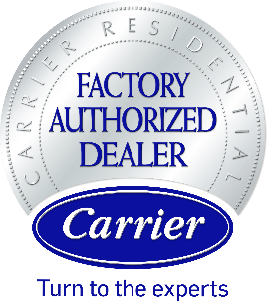One of the potentially confusing aspects of Riverside, CA, residential air purification is that brands use terms like scrubber, cleaner, and purifier inconsistently. Traditionally, this occurs with air scrubbers, which are standalone air purification machines. A scrubber houses a blower and all filter stages in a single unit.
This makes them portable and perfect for sites with many particulates in the air, such as a construction site. The air scrubbers used for residential purposes are similar but have been adapted to have their own duct or are installed in ductwork. Air scrubbers commonly have absorptive and particulate filtration. Many also have prefiltration and ultraviolet (UV) filtration.
Prefiltration
A prefilter is a type of mechanical filter. Its primary purpose is to block large particles, such as those larger than 1.0 microns in size. This extends the life of the absorptive and primary mechanical filer media, which are generally much more expensive. Prefilters, on the other hand, are relatively inexpensive. You can discard and replace them as needed without much concern for the cost. That may even be every month or every couple of weeks, depending on how much air your scrubber moves.
Absorptive Filtration
The purpose of an air scrubber is to improve indoor air quality (IAQ). One way it does this is through activated carbon. It’s a processed form of carbon that has a large volume of tiny pores. Those pores give it great absorptive capacity and surface area. This is why it’s commonly used as both an air purifier and a water purifier. It absorbs unpleasant odors. In this application, it also absorbs:
- Gases
- Fumes
- Smoke
- Airborne chemicals
- Volatile organic compounds (VOCs)
Activated carbon is by far the most effective absorptive filter known for residential applications.
Mechanical Filtration
The most important air scrubber filter stage for good IAQ is the primary mechanical or particulate filter. Most air scrubber brands opt for a high-efficiency particulate air filter (HEPA) and a True HEPA filter. A True HEPA filter traps 99.97% of all particles as small as 0.3 microns in size. It also filters a significant portion of fine particulate matter or PM 2.5. Those are particles that are 2.5 microns or smaller. These are the particles science associates with ambient air pollution and the related respiratory and cardiovascular illnesses.
If you want to trap even more particulates, you can opt for a medical-grade HEPA filter. They are more expensive, but most air scrubbers support them, and they are more effective. H13 filters trap 99.95% of particles as small as 0.2 microns. H14 filters trap the same particles but with 99.995% efficiency.
Note that not all filters that use the word HEPA in their branding meet the Department of Energy (DOE) standards for HEPA. Look specifically for True HEPA, H13 HEPA, and H14 HEPA. This generally indicates an inferior product.
That said, not all air scrubbers provide HEPA levels of filtration. It’s beyond what’s necessary, for instance, to remove allergens like dust, pollen, and pet dander. For filters below the HEPA level, you’ll want to note the minimum efficiency reporting value (MERV) rating. This is a measure of filter efficiency and airflow restriction. You’ll generally want at least MERV 13 for the most common allergens. In contrast, medical-grade HEPA filters have a MERV rating of 16 and up. Not all residential HVAC equipment can handle very high-MERV-rated filters. Check with a professional to determine what filter you can use in your home.
Ultraviolet Filtration
It’s become increasingly common for air scrubbers to have a UV stage. This filter stage radiates UV-C light, which is a germicidal light. It neutralizes pathogens, such as bacteria, viruses, and microbes. It can also deactivate biologicals like dust mite eggs, mold spores, and fungal spores. If you purchase an air scrubber without a UV stage, you also have the option of UV lamps. Your technician can install those in your ducts ahead of the air scrubber.
Air Scrubbers for Central HVAC
Your HVAC technician will generally integrate an air scrubber into your HVAC system by installing it in your ducts. This is the return side of the system. The benefit here is that airflow restriction at this level isn’t a concern, and you can have powerful particulate filtration. Supply-side air purifiers are an option but generally limit you to activated carbon and a MERV 13 air filter.
Air Scrubbers for Ductless HVAC
Most whole-house air scrubbers on the market are suitable for homes without central HVAC. A common solution is to install them in the attic. We’ll then run a small duct from the output to a centrally located vent.
What About Compact Air Scrubbers?
You may encounter air scrubbers that are about the size of your hand. Manufacturers design these units to be easy to install in ducts. They’re an alternative to a UV lamp and have a UV light inside. They usually have activated carbon as well for passive absorptive filtration. The drawback compared to a traditional air scrubber is that it lacks particulate filtration.
Airflow
An important consideration with any air scrubber is how much air it can move through its filtration. An air scrubber will have a blower, which will provide airflow measured in cubic feet per minute (CFM). To achieve a particular level of filtration, a manufacturer must balance CFM, airflow restriction, and the overall size of the filters.
CFM on its own is not particularly valuable. For a whole-home air scrubber, you also need to know the total square footage, which includes the length, width, and height of every room.
Air changes per hour (ACH) is (CFM * 60) / total square footage. Consider a 2,000-square-foot air scrubber rated at 4 ACH. If used in a 2,000-square-foot home, it would filter all the air in the residence four times an hour.
That leads us to the question of how much ACH you need. The Centers for Disease Control and Prevention (CDC) suggests four ACH as a minimum. Many whole-house air scrubbers on the market are five ACH. If a family member has asthma or bad allergies, their allergist may recommend six ACH or higher.
You may also see a clean air delivery rate (CADR). It’s an alternative to ACH, generally used for room air purifiers. It’s a measure of how much clean air a scrubber can deliver per minute. The industry recommends a two-thirds rule for consumers. If you’re buying a scrubber for a 300-square-foot room, you’d want a CADR of at least 200.
Your Local IAQ Team in Riverside
Sheldon's Heating, Air Conditioning & Plumbing is a family-owned business that’s proud to serve Riverside and the surrounding areas. Our IAQ team specializes in all manner of air filters, purifiers, cleaners, and scrubbers. We install air monitoring, dehumidifiers, humidifiers, UV lights, whole-house fans, and solar attic fans. Our NATE-certified technicians install, maintain, and repair furnaces, heat pumps, air conditioners, and ductless mini-splits.
We also have plumbers who clean and repair drains and install and repair tanks, tankless systems, and heat pump water heaters. Call us today or contact us online with any questions or to schedule an indoor air quality appointment.




